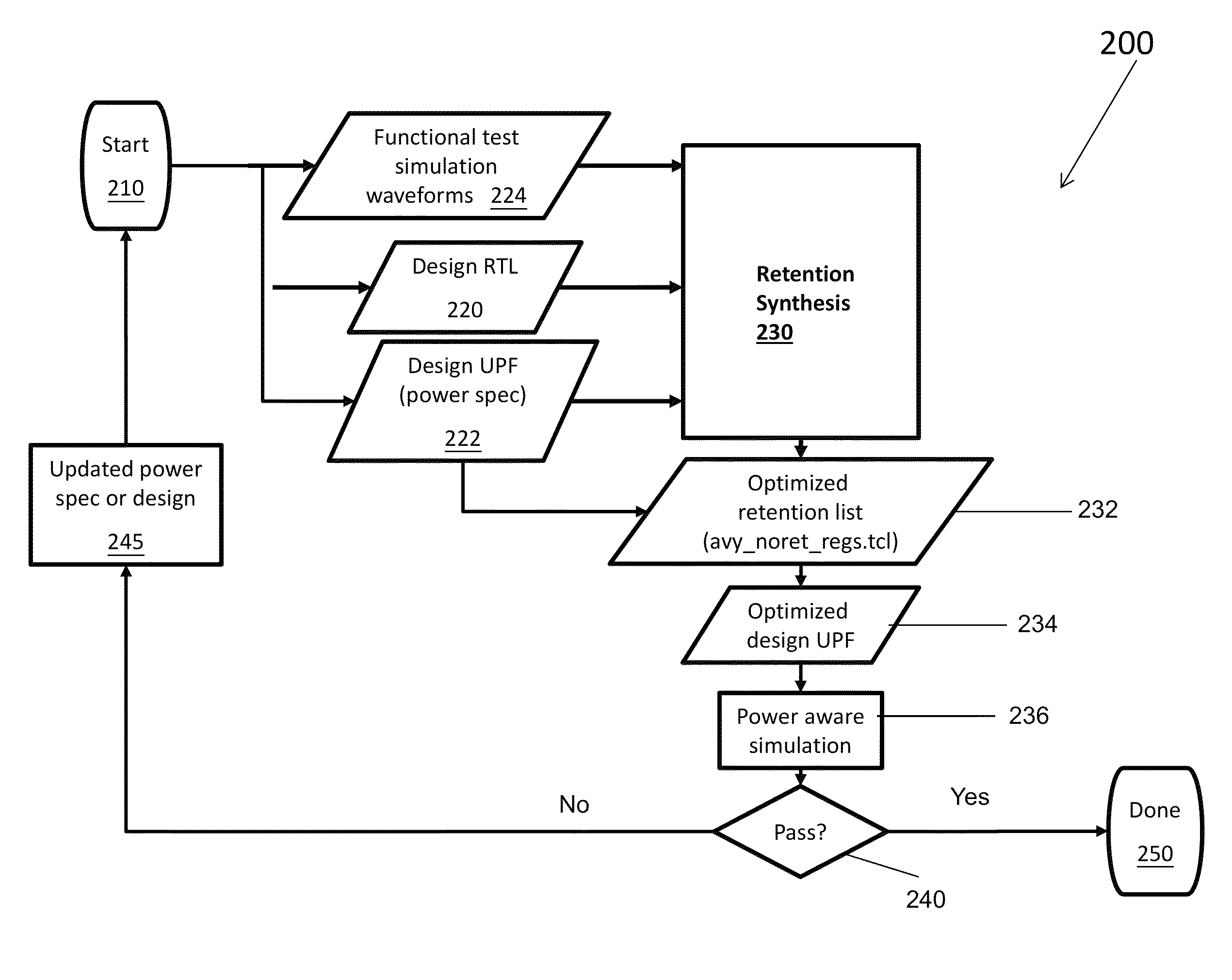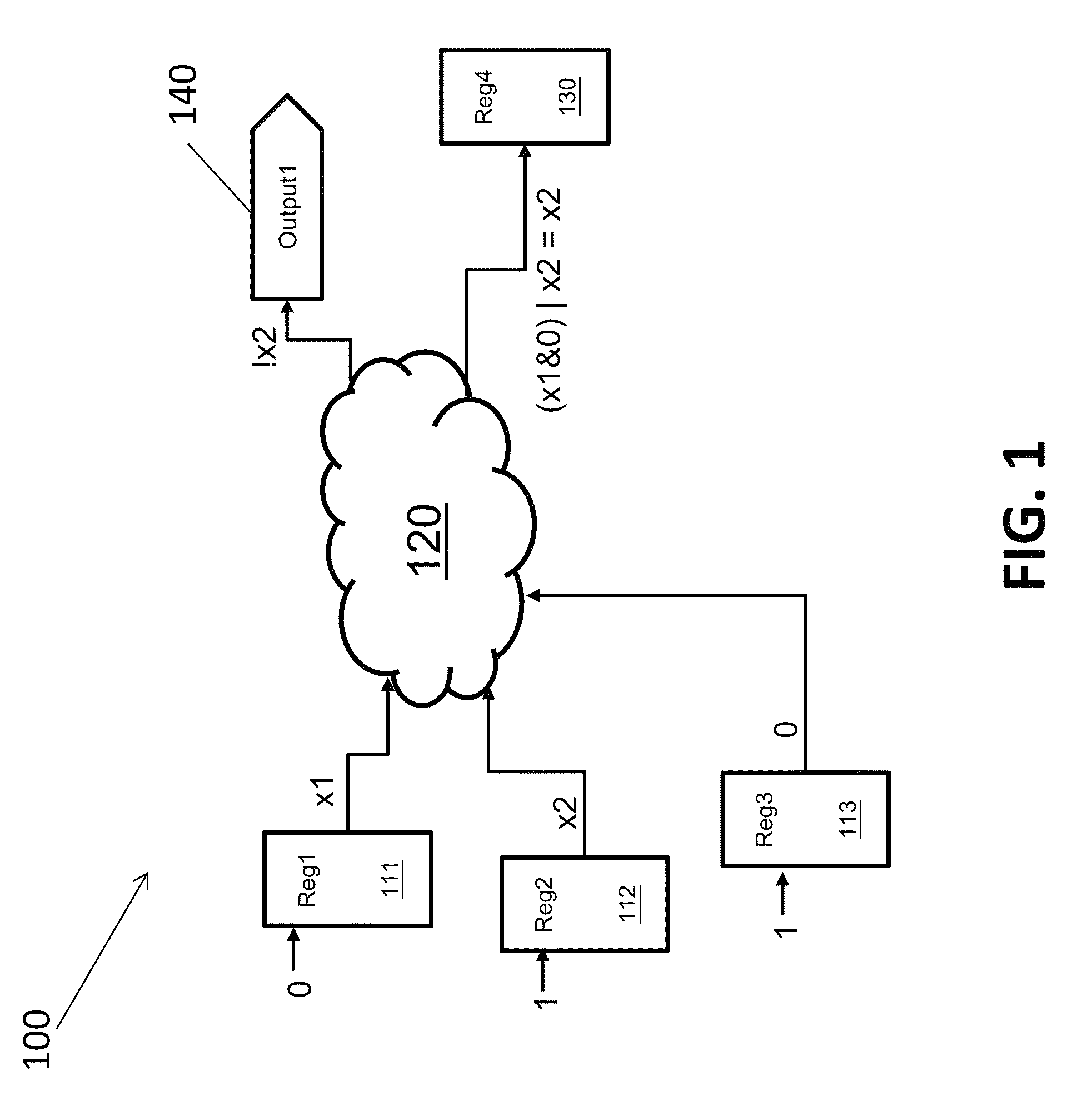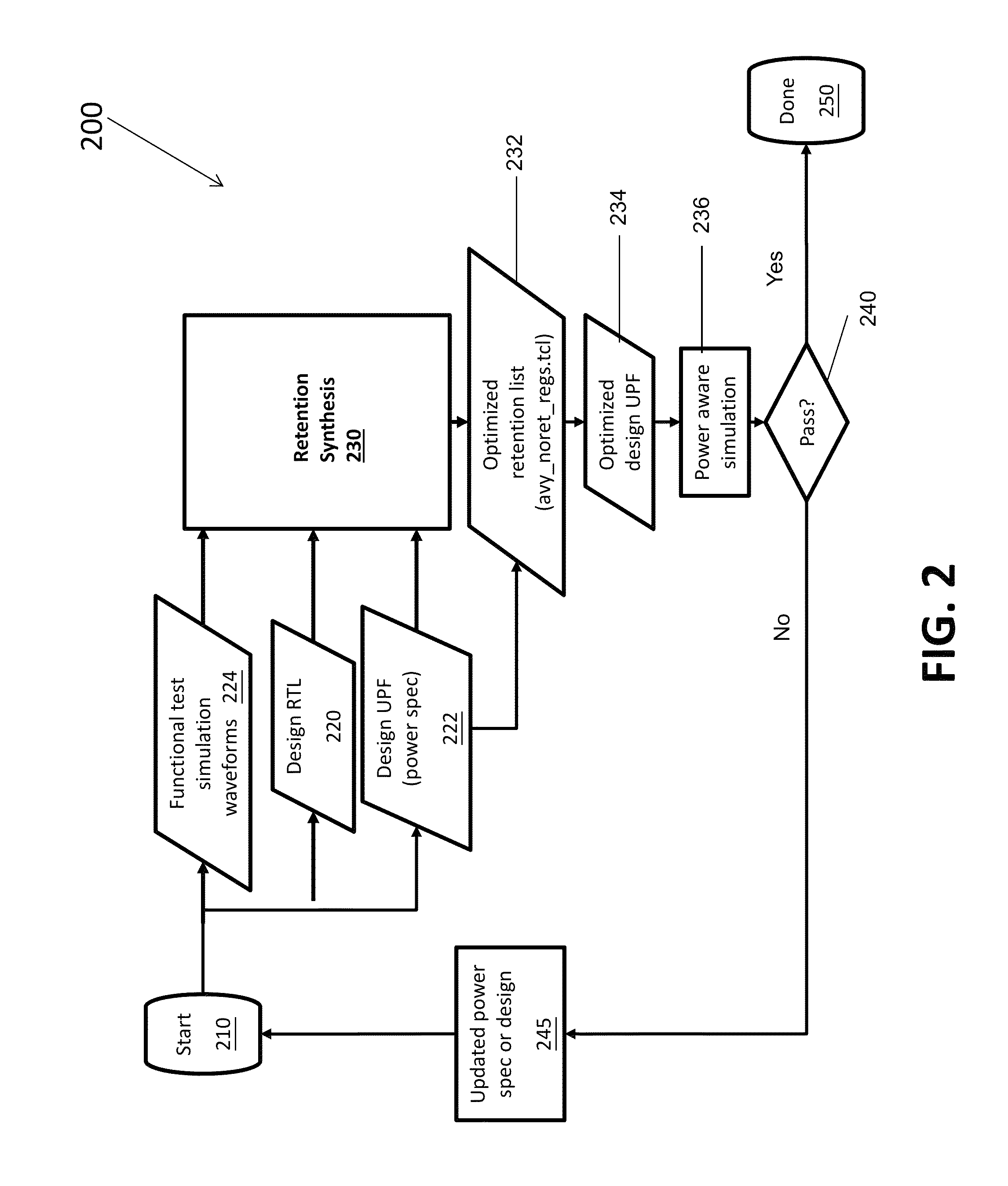Systems and methods for partial retention synthesis
a partial retention and synthesis technology, applied in the direction of cad circuit design, program control, instruments, etc., can solve the problems of power consumption, circuit behavior unpredictable, power-loss of power-down blocks, etc., and achieve the effect of producing more cost-effectively
- Summary
- Abstract
- Description
- Claims
- Application Information
AI Technical Summary
Benefits of technology
Problems solved by technology
Method used
Image
Examples
Embodiment Construction
[0021]The systems and methods shown and described herein analyze a circuit design, functional test sequences and the associated power specification to identify registers that do not need retention (“non-retention registers”) and / or registers that do need retention (“retention registers”) when a block (of the chip) is powered down. Reducing the number of retention registers reduces power consumption and overall chip area, producing circuits that are less expensive and more efficient. Generally, retention registers require power and are more expensive than non-retention registers. Thus, it is desirable to increase the number of non-retention registers and reduce the number of retention registers.
[0022]The systems, methods and procedures herein are based, at least in part, upon symbolic simulation. In symbolic simulation, a symbol is used to represent a value that can be either “0” or “1”, while an ordinary scalar value can only be one of the two possible values. Symbolic simulation th...
PUM
 Login to View More
Login to View More Abstract
Description
Claims
Application Information
 Login to View More
Login to View More - R&D
- Intellectual Property
- Life Sciences
- Materials
- Tech Scout
- Unparalleled Data Quality
- Higher Quality Content
- 60% Fewer Hallucinations
Browse by: Latest US Patents, China's latest patents, Technical Efficacy Thesaurus, Application Domain, Technology Topic, Popular Technical Reports.
© 2025 PatSnap. All rights reserved.Legal|Privacy policy|Modern Slavery Act Transparency Statement|Sitemap|About US| Contact US: help@patsnap.com



